An Intelligent Dual-Axis Solar Tracking System for Remote Weather Monitoring in the Agricultural Field
Abstract
1. Introduction and Background
- To improve the efficiency of solar panels, the paper proposes a solar tracking system with dual axes that can move to adjust its position. The solar tracking system aims to maximize energy generation by optimizing the orientation of the solar panels;
- The proposed system not only maximizes energy but also provides additional parameters such as humidity, temperature, and air quality from remote agricultural fields;
- The collected parameters can be accessed through a mobile app, making it easier fo farmers to monitor and manage their agricultural activities. The implementation of the proposed system shows enhanced energy generation and provides valuable data for agricultural purposes.
2. Materials and Methods
2.1. Proposed Model
2.1.1. DHT11 Sensor
- Operating Voltage: 3.3 V to 5 V (typically powered with 5 V for most applications);
- Operating Current: Around 2.5 mA to 3 mA during data acquisition;
- Standby Current: Minimal standby power consumption.
2.1.2. MQ135 Sensor
- Operating Voltage: 5 V (typically powered with 5 V for most applications);
- Heater Power: The MQ135 sensor requires a preheat time to stabilize readings. It has an internal heater element that consumes around 120 mA to 150 mA during the preheating phase;
- Operating Current: After preheating, the operating current drops to around 40 mA during gas sensing;
- Standby Current: Minimal standby power consumption after preheating.
2.1.3. Sensor and Actuator Accuracy and Ranges
2.2. Proposed Artificial Neural Network
2.3. Power of the Measuring System
2.4. Algorithm for QoS Optimization
| Algorithm 1 Algorithm for QoS optimization |
Input Parameters: Local date, Time, Time Zone, Location (latitude and longitude), Altitude
|
3. Results
3.1. System Efficiency
3.2. Daily Analysis
- The temperature range and fluctuations give an indication of typical conditions that may be experienced. This could help with system design considerations;
- The humidity and air quality averages establish baseline levels for the location. This is valuable reference information;
- The diurnal temperature profile shows the temperature variation over a 24 h cycle. This can inform solar energy generation modeling;
- The values then can be used by the farmers for making further decisions. These real-time data on weather parameters such as temperature, humidity, etc. can help farmers make informed decisions on irrigation, pest control, and other crop management practices.
3.3. Annual Analysis
3.4. Performance of Artificial Neural Network
- Levenberg–Marquardt;
- Bayesian Regularization;
- Scaled Conjugate Gradient.
3.5. Important Characteristics of the Proposed Approach
- Improved Efficiency: The main objective of this research is to enhance the efficiency of solar panels in providing constant power to sensors in agricultural fields. By implementing a solar tracking system that changes its direction in two axes based on the sun’s position, the proposed approach optimizes the orientation of the solar panels for maximum energy generation;
- Real-time Data Collection: In addition to energy maximization, the proposed system also focuses on collecting real-time data on weather parameters such as temperature, humidity, and rainfall. These data can be used by farmers to make informed decisions regarding irrigation, pest control, and other crop management practices. The collected data are transferred to a mobile app, making it easier for farmers to access and utilize the information;
- Hardware Experimental Setup: A testbed with a hardware experimental setup is designed to evaluate the system’s capability to track the sun effectively. This allows for practical testing and validation of the proposed approach;
- Integration of AI Techniques: The research incorporates AI techniques along with a QoS algorithm to improve the quality of service provided by the existing system. This integration enhances the overall performance and functionality of the system;
- Improved Results: The research demonstrates that the proposed system leads to a relative increase in efficiency of up to 52% compared to the existing system. These improved results highlight the effectiveness of the proposed approach in maximizing energy generation and providing valuable data for agricultural purposes.
3.6. Limitations and Future Work
- Conducting reliability engineering analyses such as FMEA to identify potential failure modes and their effects. This can help highlight vulnerabilities to be mitigated;
- Performing accelerated life testing on system components to evaluate lifespan and deterioration over time. These data can inform maintenance schedules;
- Implementing self-diagnostic features and fault-tolerant architectures to improve reliability and reduce downtime;
- Evaluating ease of repair, replacement, and upkeep to minimize maintenance labor time/costs;
- Considering the use of higher-durability components, weatherproofing, and corrosion-resistance to withstand harsh outdoor conditions;
- Analyzing tradeoffs between reliability gains and additional costs to find the optimal balance.
4. Conclusions
Author Contributions
Funding
Institutional Review Board Statement
Data Availability Statement
Conflicts of Interest
References
- Altwallbah, N.M.M.; Radzi, M.A.M.; Azis, N.; Shafie, S.; Zainuri, M.A.A.M. New perturb and observe algorithm based on trapezoidal rule: Uniform and partial shading conditions. Energy Convers. Manag. 2022, 264, 115738. [Google Scholar] [CrossRef]
- Abo-Khalil, A.G.; Alharbi, W.; Al-Qawasmi, A.R.; Alobaid, M.; Alarifi, I.M. Maximum power point tracking of PV systems under partial shading conditions based on opposition-based learning firefly algorithm. Sustainability 2021, 13, 2656. [Google Scholar] [CrossRef]
- Khalifa, A.E.; Refaat, A.; Kalas, A.; Elfar, M.H. Two Bio-inspired MPPT Algorithms to Harvest the Maximum Power from Partially Shaded PV Arrays. In Proceedings of the 2022 Conference of Russian Young Researchers in Electrical and Electronic Engineering (ElConRus), St. Petersburg, Russia, 25–28 January 2022; pp. 670–674. [Google Scholar]
- Refaat, A.; Osman, M.H.; Korovkin, N.V. Current collector optimizer topology to extract maximum power from non-uniform aged PV array. Energy 2020, 195, 116995. [Google Scholar] [CrossRef]
- Elsakka, M.M.; Ingham, D.B.; Ma, L.; Pourkashanian, M. Comparison of the computational fluid dynamics predictions of vertical axis wind turbine performance against detailed pressure measurements. Int. J. Renew. Energy Res. 2021, 11, 276–293. [Google Scholar]
- Abuhashish, M.N.; Daoud, A.A.; Elfar, M.H. A Novel Model Predictive Speed Controller for PMSG in Wind Energy Systems. Int. J. Renew. Energy Res. 2022, 12, 170–180. [Google Scholar]
- Amer, A.E.; Elsakka, M.M.; Lebedev, V.A. Thermal performance of an accumulator unit using phase change material with a fixed volume of fins. Int. J. Energy Res. 2021, 45, 19089–19102. [Google Scholar] [CrossRef]
- Boriskina, S.V.; Tong, J.K.; Hsu, W.C.; Weinstein, L.; Huang, X.; Loomis, J.; Xu, Y.; Chen, G. Hybrid optical-thermal devices and materials for light manipulation and radiative cooling. In Proceedings of the Active Photonic Materials VII, San Diego, CA, USA, 9–13 August 2015; Volume 9546, pp. 190–196. [Google Scholar]
- Joisher, M.; Singh, D.; Taheri, S.; Espinoza-Trejo, D.R.; Pouresmaeil, E.; Taheri, H. A hybrid evolutionary-based MPPT for photovoltaic systems under partial shading conditions. IEEE Access 2020, 8, 38481–38492. [Google Scholar] [CrossRef]
- Ram, J.P.; Rajasekar, N. A new global maximum power point tracking technique for solar photovoltaic (PV) system under partial shading conditions (PSC). Energy 2017, 118, 512–525. [Google Scholar]
- Refaat, A.; Osman, M. Current collector optimizer topology to improve maximum power from PV array under partial shading conditions. IOP Conf. Ser. Mater. Sci. Eng. 2019, 643, 012094. [Google Scholar] [CrossRef]
- Hassan, A.; Bass, O.; Masoum, M.A. An improved genetic algorithm based fractional open circuit voltage MPPT for solar PV systems. Energy Rep. 2023, 9, 1535–1548. [Google Scholar] [CrossRef]
- Verma, P.; Garg, R.; Mahajan, P. Asymmetrical interval type-2 fuzzy logic control based MPPT tuning for PV system under partial shading condition. ISA Trans. 2020, 100, 251–263. [Google Scholar] [CrossRef] [PubMed]
- Refaat, A.; Elgamal, M.; Korovkin, N.V. A novel photovoltaic current collector optimizer to extract maximum power during partial shading or mismatch conditions. In Proceedings of the 2019 IEEE Conference of Russian Young Researchers in Electrical and Electronic Engineering (EIConRus), St. Petersburg/Moscow, Russia, 28–31 January 2019; pp. 407–412. [Google Scholar]
- Osman, M.H.; Ahmed, M.K.; Refaat, A.; Korovkin, N.V. A comparative study of MPPT for PV system based on modified perturbation & observation method. In Proceedings of the 2021 IEEE Conference of Russian Young Researchers in Electrical and Electronic Engineering (ElConRus), St. Petersburg/Moscow, Russia, 26–29 January 2021; pp. 1023–1026. [Google Scholar]
- Osman, M.H.; Elseify, M.A.; Ahmed, M.K.; Korovkin, N.V.; Refaat, A. Highly Efficient MPP Tracker based on Adaptive Neuro-fuzzy Inference System for Stand-Alone Photovoltaic Generator System. Int. J. Renew. Energy Res. 2022, 12, 208–217. [Google Scholar]
- Narasimman, K.; Gopalan, V.; Bakthavatsalam, A.; Elumalai, P.; Shajahan, M.I.; Michael, J.J. Modelling and real time performance evaluation of a 5 MW grid-connected solar photovoltaic plant using different artificial neural networks. Energy Convers. Manag. 2023, 279, 116767. [Google Scholar] [CrossRef]
- Azli, H.; Titri, S.; Larbes, C.; Kaced, K.; Femmam, K. Novel yellow saddle goatfish algorithm for improving performance and efficiency of PV system under partial shading conditions. Sol. Energy 2022, 247, 295–307. [Google Scholar] [CrossRef]
- Ahmed, J.; Salam, Z. A Maximum Power Point Tracking (MPPT) for PV system using Cuckoo Search with partial shading capability. Appl. Energy 2014, 119, 118–130. [Google Scholar] [CrossRef]
- Mirza, A.F.; Ling, Q.; Javed, M.Y.; Mansoor, M. Novel MPPT techniques for photovoltaic systems under uniform irradiance and Partial shading. Sol. Energy 2019, 184, 628–648. [Google Scholar] [CrossRef]
- Aouchiche, N.; Aitcheikh, M.; Becherif, M.; Ebrahim, M.A. AI-based global MPPT for partial shaded grid connected PV plant via MFO approach. Sol. Energy 2018, 171, 593–603. [Google Scholar] [CrossRef]
- Mohanty, S.; Subudhi, B.; Ray, P.K. A new MPPT design using grey wolf optimization technique for photovoltaic system under partial shading conditions. IEEE Trans. Sustain. Energy 2015, 7, 181–188. [Google Scholar] [CrossRef]
- Liu, H.D.; Lin, C.H.; Pai, K.J.; Wang, C.M. A GMPPT algorithm for preventing the LMPP problems based on trend line transformation technique. Sol. Energy 2020, 198, 53–67. [Google Scholar] [CrossRef]
- Mansoor, M.; Mirza, A.F.; Ling, Q. Harris hawk optimization-based MPPT control for PV systems under partial shading conditions. J. Clean. Prod. 2020, 274, 122857. [Google Scholar] [CrossRef]
- Mirza, A.F.; Mansoor, M.; Ling, Q. A novel MPPT technique based on Henry gas solubility optimization. Energy Convers. Manag. 2020, 225, 113409. [Google Scholar] [CrossRef]
- Chandrasekaran, K.; Sankar, S.; Banumalar, K. Partial shading detection for PV arrays in a maximum power tracking system using the sine-cosine algorithm. Energy Sustain. Dev. 2020, 55, 105–121. [Google Scholar] [CrossRef]
- Fares, D.; Fathi, M.; Shams, I.; Mekhilef, S. A novel global MPPT technique based on squirrel search algorithm for PV module under partial shading conditions. Energy Convers. Manag. 2021, 230, 113773. [Google Scholar] [CrossRef]
- Eltamaly, A.M.; Al-Saud, M.; Abokhalil, A.G.; Farh, H.M. Simulation and experimental validation of fast adaptive particle swarm optimization strategy for photovoltaic global peak tracker under dynamic partial shading. Renew. Sustain. Energy Rev. 2020, 124, 109719. [Google Scholar] [CrossRef]
- Mirza, A.F.; Mansoor, M.; Ling, Q.; Yin, B.; Javed, M.Y. A Salp-Swarm Optimization based MPPT technique for harvesting maximum energy from PV systems under partial shading conditions. Energy Convers. Manag. 2020, 209, 112625. [Google Scholar] [CrossRef]
- Lyden, S.; Haque, M.E. A simulated annealing global maximum power point tracking approach for PV modules under partial shading conditions. IEEE Trans. Power Electron. 2015, 31, 4171–4181. [Google Scholar] [CrossRef]
- Mansoor, M.; Mirza, A.F.; Ling, Q.; Javed, M.Y. Novel Grass Hopper optimization based MPPT of PV systems for complex partial shading conditions. Sol. Energy 2020, 198, 499–518. [Google Scholar] [CrossRef]
- Eltamaly, A.M. An improved cuckoo search algorithm for maximum power point tracking of photovoltaic systems under partial shading conditions. Energies 2021, 14, 953. [Google Scholar] [CrossRef]
- Guo, K.; Cui, L.; Mao, M.; Zhou, L.; Zhang, Q. An improved gray wolf optimizer MPPT algorithm for PV system with BFBIC converter under partial shading. IEEE Access 2020, 8, 103476–103490. [Google Scholar] [CrossRef]
- Motamarri, R.; Bhookya, N.; Chitti Babu, B. Modified grey wolf optimization for global maximum power point tracking under partial shading conditions in photovoltaic system. Int. J. Circuit Theory Appl. 2021, 49, 1884–1901. [Google Scholar] [CrossRef]
- Obukhov, S.; Ibrahim, A.; Diab, A.A.Z.; Al-Sumaiti, A.S.; Aboelsaud, R. Optimal performance of dynamic particle swarm optimization based maximum power trackers for stand-alone PV system under partial shading conditions. IEEE Access 2020, 8, 20770–20785. [Google Scholar] [CrossRef]
- Mirza, A.F.; Mansoor, M.; Zhan, K.; Ling, Q. High-efficiency swarm intelligent maximum power point tracking control techniques for varying temperature and irradiance. Energy 2021, 228, 120602. [Google Scholar] [CrossRef]
- Chai, L.G.K.; Gopal, L.; Juwono, F.H.; Chiong, C.W.; Ling, H.C.; Basuki, T.A. A novel global MPPT technique using improved PS-FW algorithm for PV system under partial shading conditions. Energy Convers. Manag. 2021, 246, 114639. [Google Scholar] [CrossRef]
- Gong, L.; Hou, G.; Huang, C. A two-stage MPPT controller for PV system based on the improved artificial bee colony and simultaneous heat transfer search algorithm. ISA Trans. 2023, 132, 428–443. [Google Scholar] [CrossRef]
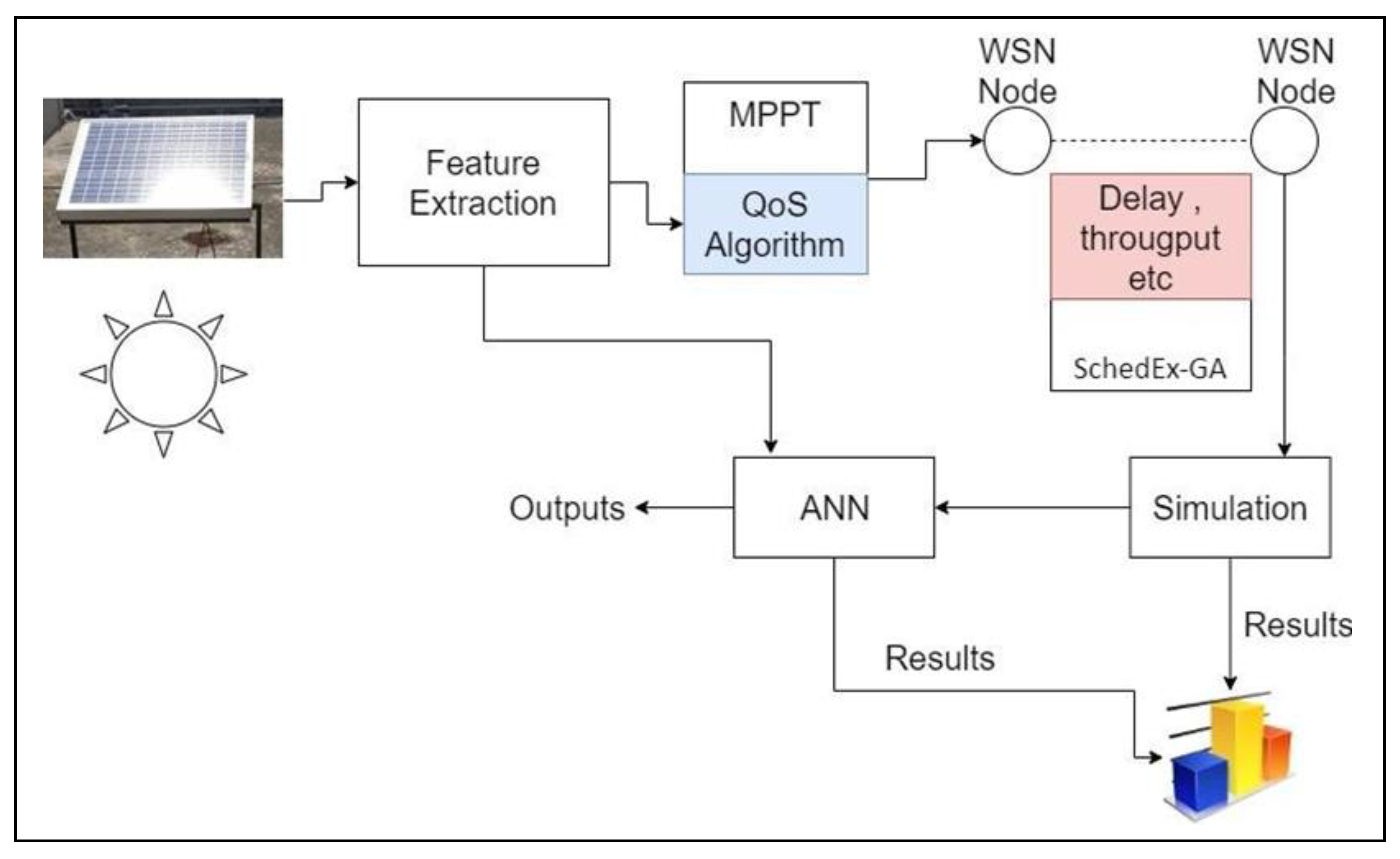




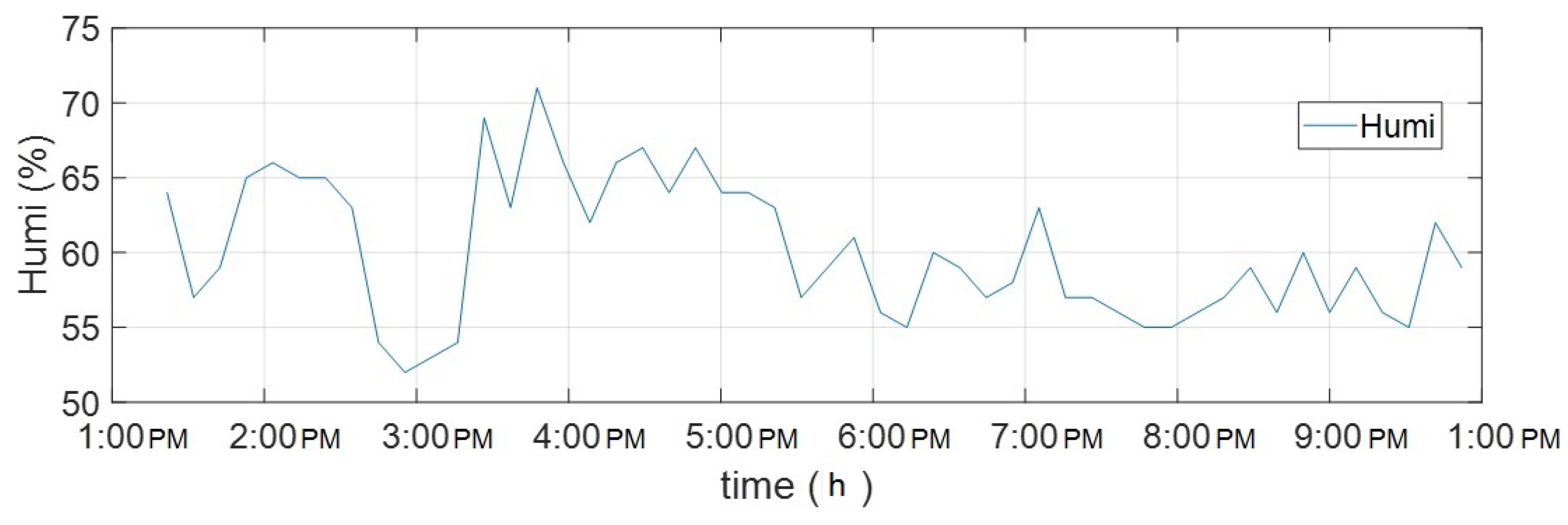
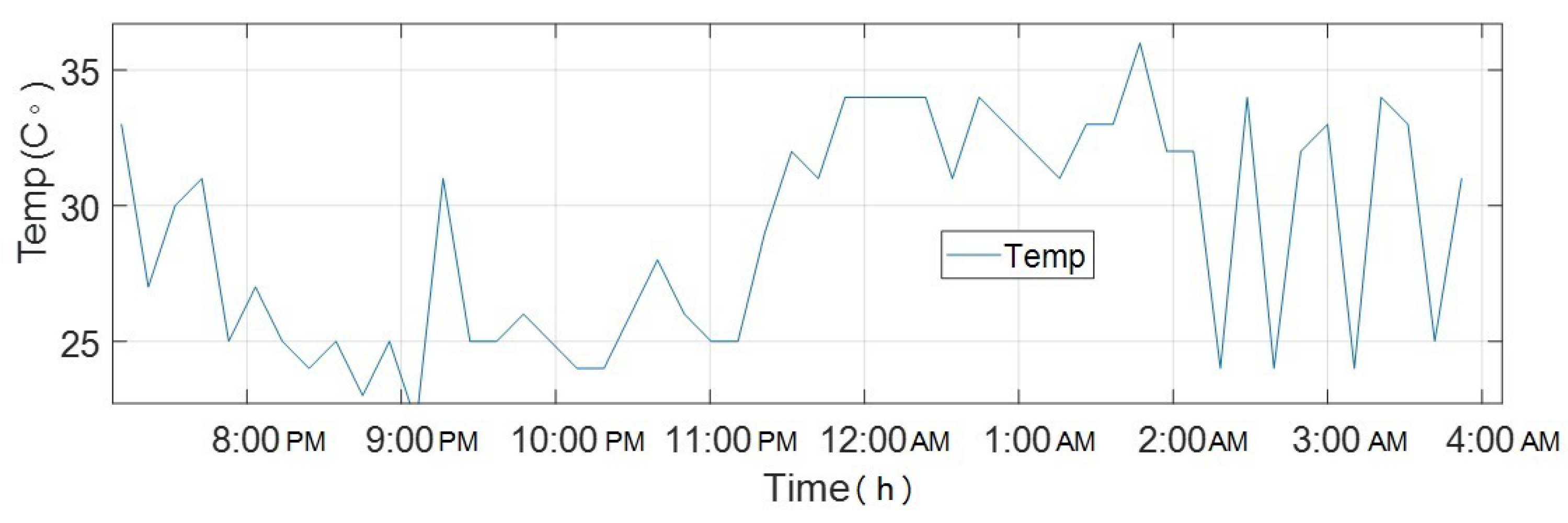
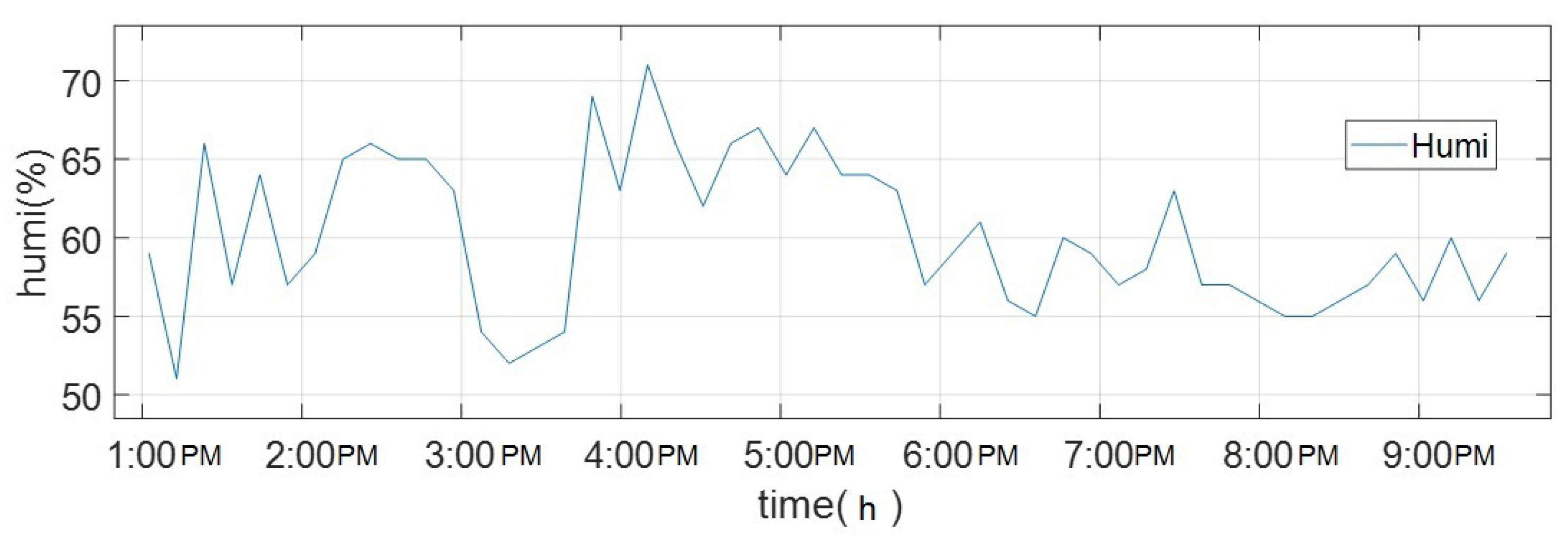
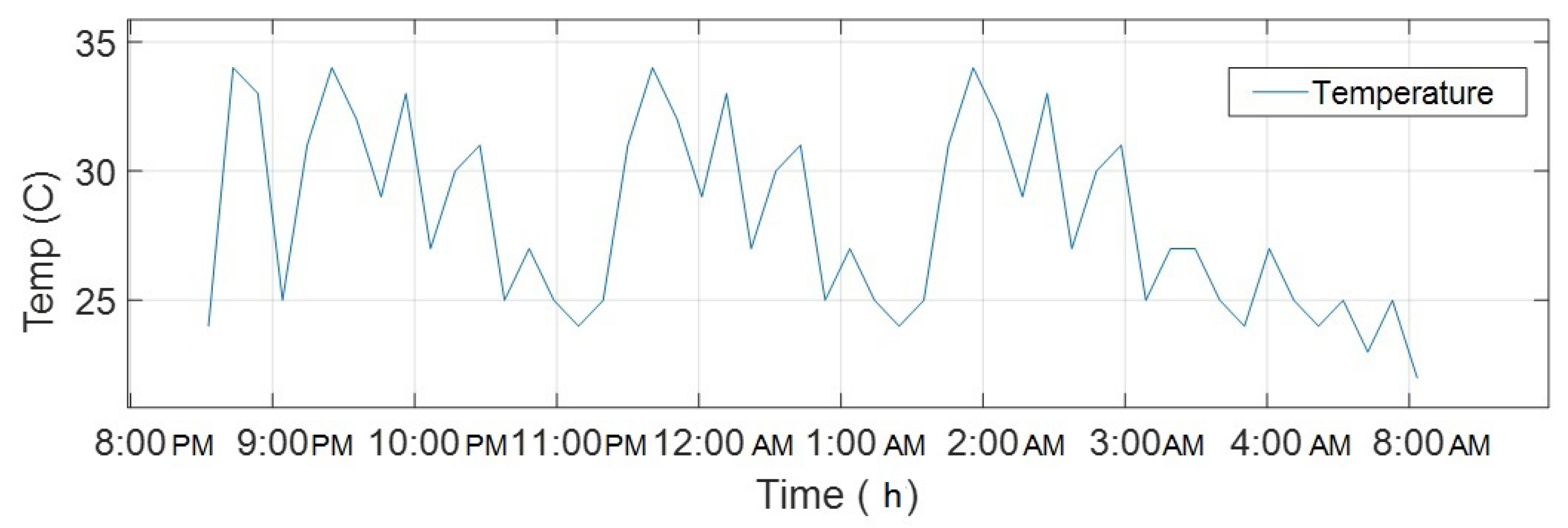


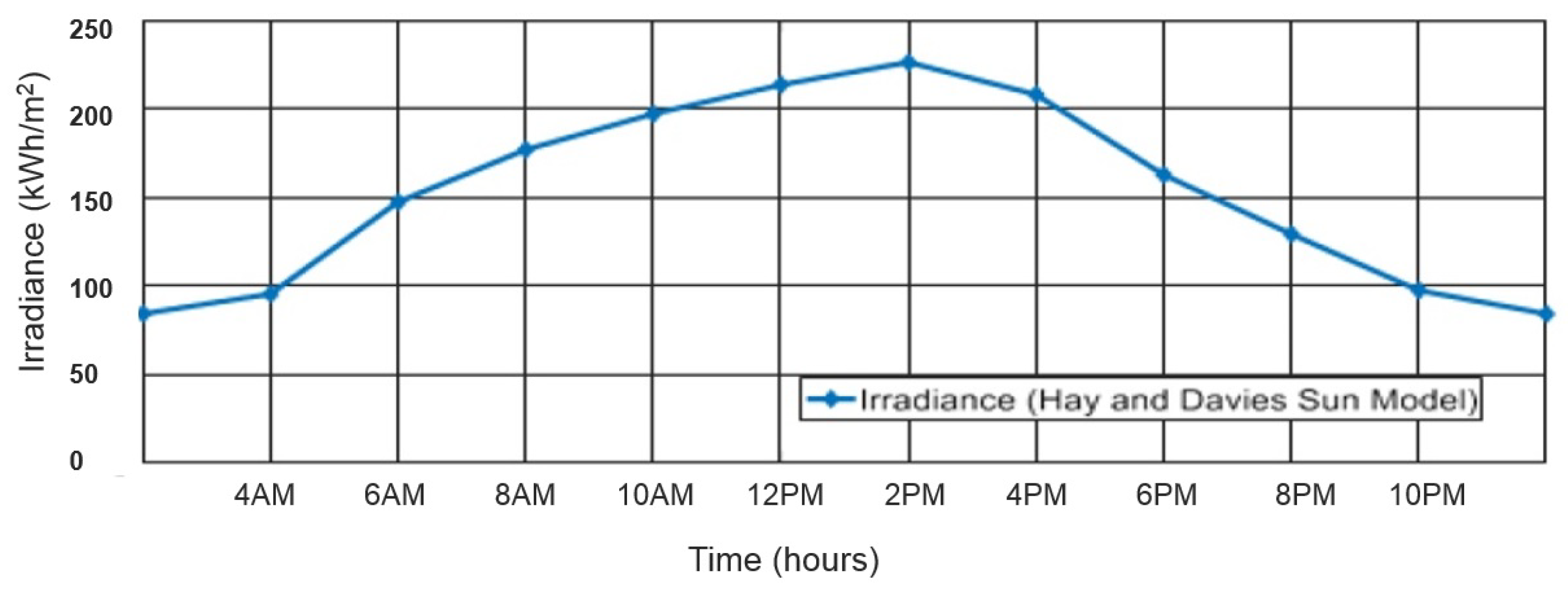
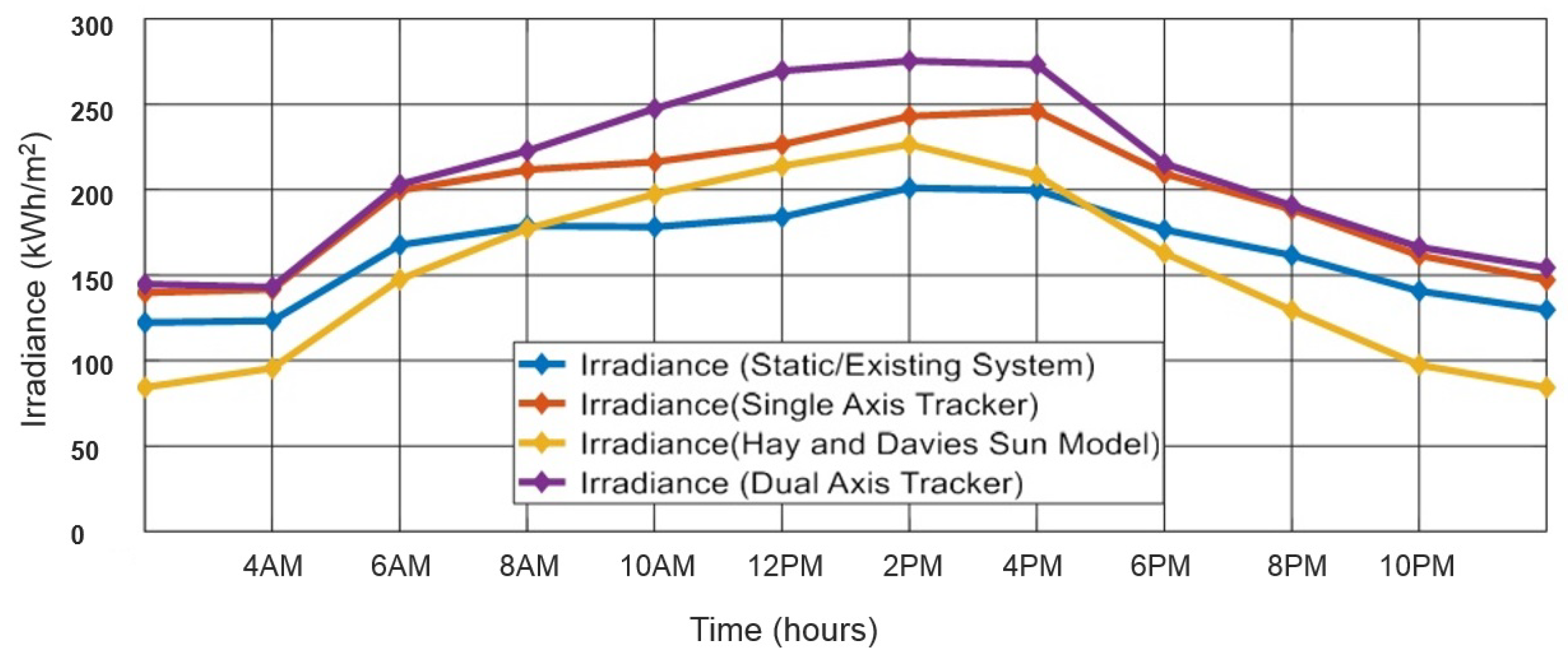

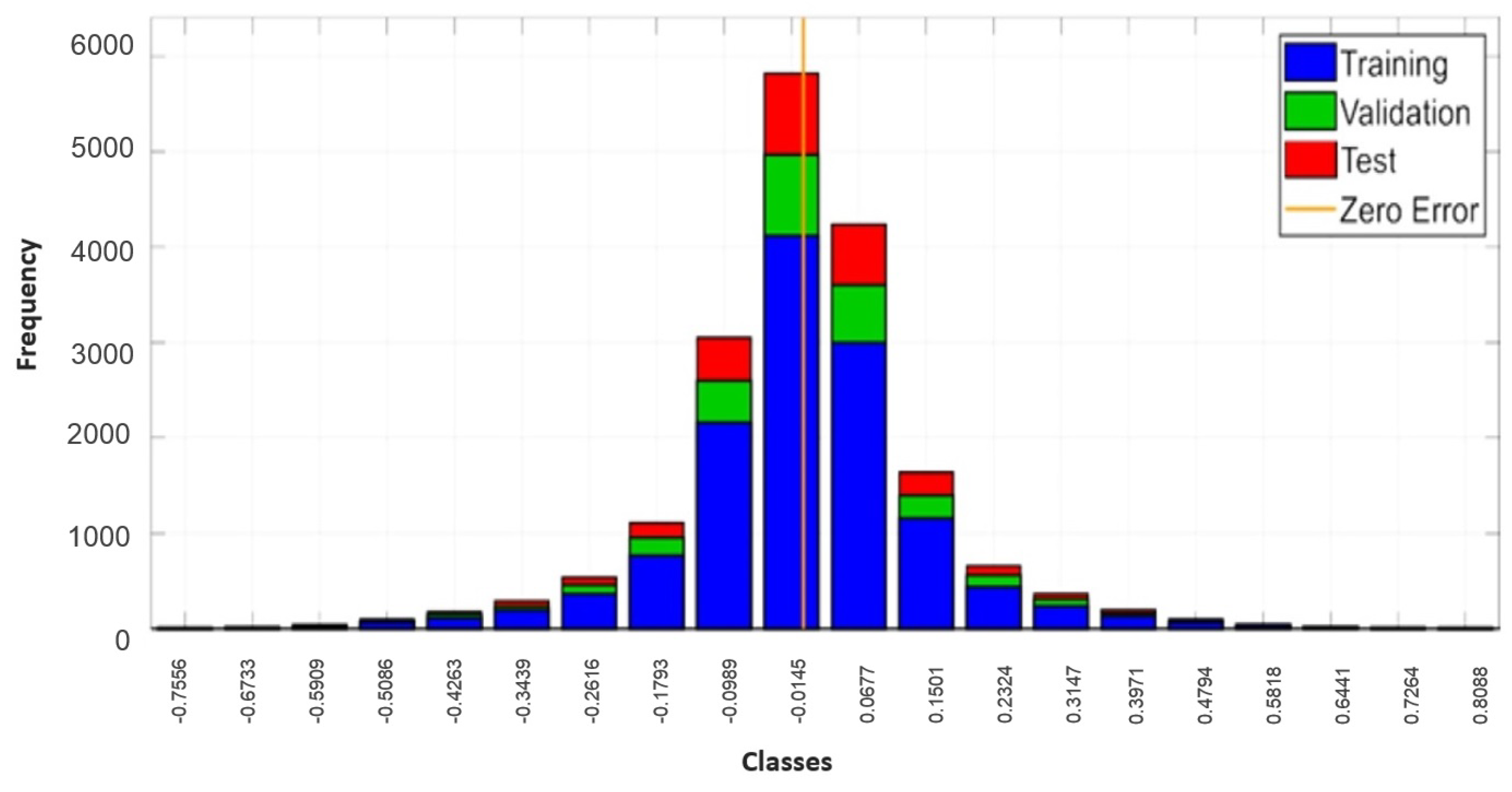
| Ref. | Findings | Framework | Results | Limitations |
|---|---|---|---|---|
| [32] | Provided the energy management scheme | Trio energy management scheme: energy harvest, transfer, and conservation | Maintaining the network lifetime. Balance the energy. Network more operational and efficient | Cost of experimentation using testbeds. Simulation tools were not supportive of energy |
| [33] | Proposed harvesting: MPPT, energy storage, and cold booting. Examined technical issues with solar energy harvesting. Compared batteries and supercapacitors | Perturbation-based MPPT micro-solar MPPT approach or load-matching sensor-driven MPPT | Increased efficiency, achieving low overhead, achieving a balance between high and low output | Implementation issues. Storage issues |
| [34] | Solution to the problem of WSN nodes by ambient solar energy | Solar energy harvesting system. Pulse width modulation (PWM) and maximum power point tracking (MPPT) | Increased efficiency 87%, PWM efficiency, and 96% efficiency by MPPT | Advanced MPPT algorithms such as NN, Fuzzy logic not used |
| [35] | Hybrid cluster-heads framework | Weaseled, distributed cluster-head re-selection and a polynomial time-scheduling algorithm | Reduced battery depletion by 20%, overcame cost by 25%, improved network performance. | Performance increased but system cost was compromised |
| [36] | Presented a model of a bi-stable energy harvester | Bi-stable energy harvester improved performance | Generated a larger power output | Non-guaranteed QoS |
| [37] | Gave power control policy | QoS-driven power control policy joined energy, harvesting Water Filling (E-WF) scheme, harvesting Channel | Optimized the Effective Energy Policy (EEE) | Guaranteed QoS but cost factor compromised |
| [38] | Proposed algorithm to optimize the sensor’s operational ability | Design of an energy harvesting system, solar energy prediction model, downgrade function algorithm | Improved the QoS. Resolved optimization problems on low-power sensors | No guarantee of the solutions, high-cost computational algorithms cannot be embedded into resource-constrained sensors |
| Component | Specifications | Average Value |
|---|---|---|
| Solar Panel | Type: Photovoltaic | - |
| Capacity: [Watts or Kilowatts] | 300 W | |
| Dimensions: [Length × Width × Thickness] | 1650 mm × 992 mm × 40 mm | |
| Material: [Monocrystalline, Polycrystalline, etc.] | Monocrystalline Silicon | |
| Operating Voltage: [Volts] | 36 V | |
| Temperature Coefficient: [%/C] | −0.3% per C | |
| Controller | Type: Intelligent dual-axis solar tracking | - |
| Tracking Algorithm: [Description] | Sun Tracking Algorithm | |
| Power Supply: [Input Voltage and Power] | 24 V DC, 10 W | |
| Tracking Accuracy: [Degrees or Percentage] | ±0.5 | |
| Control Modes: [Manual, Automatic] | Automatic | |
| Power Converter | Type: Bidirectional | - |
| Maximum Power Point Tracking (MPPT): [Yes/No] | Yes | |
| Input Voltage Range: [Volts] | 150–600 V | |
| Output Voltage: [Volts] | 230 V | |
| Sensors | Weather Sensors: [List of Weather Sensors] | Temperature, Humidity DHT11 |
| Power Supply: [Battery-operated, Solar-powered] | Solar-powered |
| Time | Power Source | Activity |
|---|---|---|
| 8 a.m. to 6 p.m. | Solar Panels | Measuring system powered by solar energy. Excess energy charges the battery. |
| 6 p.m. to 8 a.m. (next day) | Battery | Measuring system operates on stored energy from the battery. |
| Component | Power Consumption (Approx.) |
|---|---|
| Sensors (Temperature, Humidity) | 5 to 10 Watts |
| Data Logger and Communication Module | 5 to 10 Watts |
| Power Supply (Solar Panel Array + Battery) | 50-Watt solar panel array + 100 Ah battery capacity |
| Temperature | Humidity | Air Quality | |
|---|---|---|---|
| Experiment 1 | 29 C | 59% | 1464 ppm |
| Experiment 2 | 29 C | 60% | 1346 ppm |
| Experiment 3 | 29 C | 60% | 1314 ppm |
| Experiment 4 | 29 C | 60% | 1367 ppm |
| Solar Panel System | Description | Yearly EnergyEfficiency (Approx.) |
|---|---|---|
| Dual-Axis Tracking | Dual-axis solar panels can track the sun both horizontally and vertically | 98.7% |
| Single-Axis Tracking | Single-axis solar panels can only track the sun along one axis (usually east–west) | 98.2% |
| Fixed Tilt | Fixed-tilt solar panels remain stationary and do not track the sun’s movement | 98.3% |
Disclaimer/Publisher’s Note: The statements, opinions and data contained in all publications are solely those of the individual author(s) and contributor(s) and not of MDPI and/or the editor(s). MDPI and/or the editor(s) disclaim responsibility for any injury to people or property resulting from any ideas, methods, instructions or products referred to in the content. |
© 2023 by the authors. Licensee MDPI, Basel, Switzerland. This article is an open access article distributed under the terms and conditions of the Creative Commons Attribution (CC BY) license (https://creativecommons.org/licenses/by/4.0/).
Share and Cite
Kanwal, T.; Rehman, S.U.; Ali, T.; Mahmood, K.; Villar, S.G.; Lopez, L.A.D.; Ashraf, I. An Intelligent Dual-Axis Solar Tracking System for Remote Weather Monitoring in the Agricultural Field. Agriculture 2023, 13, 1600. https://doi.org/10.3390/agriculture13081600
Kanwal T, Rehman SU, Ali T, Mahmood K, Villar SG, Lopez LAD, Ashraf I. An Intelligent Dual-Axis Solar Tracking System for Remote Weather Monitoring in the Agricultural Field. Agriculture. 2023; 13(8):1600. https://doi.org/10.3390/agriculture13081600
Chicago/Turabian StyleKanwal, Tabassum, Saif Ur Rehman, Tariq Ali, Khalid Mahmood, Santos Gracia Villar, Luis Alonso Dzul Lopez, and Imran Ashraf. 2023. "An Intelligent Dual-Axis Solar Tracking System for Remote Weather Monitoring in the Agricultural Field" Agriculture 13, no. 8: 1600. https://doi.org/10.3390/agriculture13081600
APA StyleKanwal, T., Rehman, S. U., Ali, T., Mahmood, K., Villar, S. G., Lopez, L. A. D., & Ashraf, I. (2023). An Intelligent Dual-Axis Solar Tracking System for Remote Weather Monitoring in the Agricultural Field. Agriculture, 13(8), 1600. https://doi.org/10.3390/agriculture13081600









